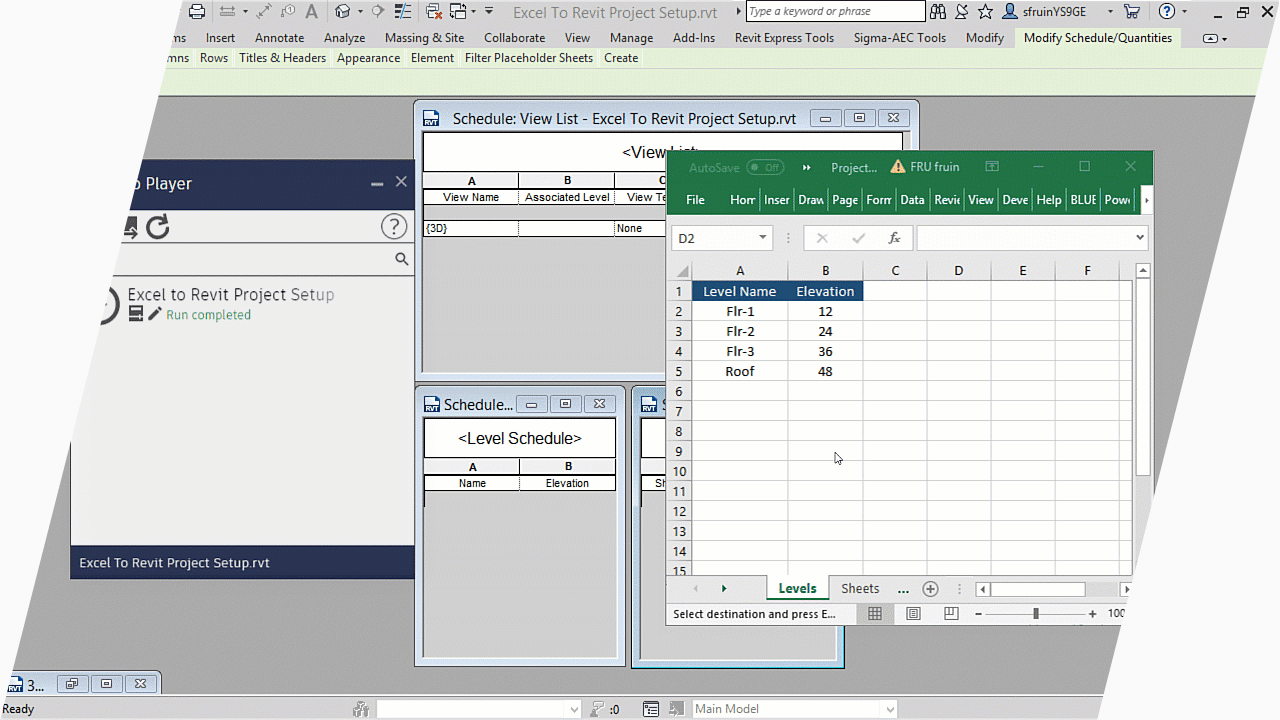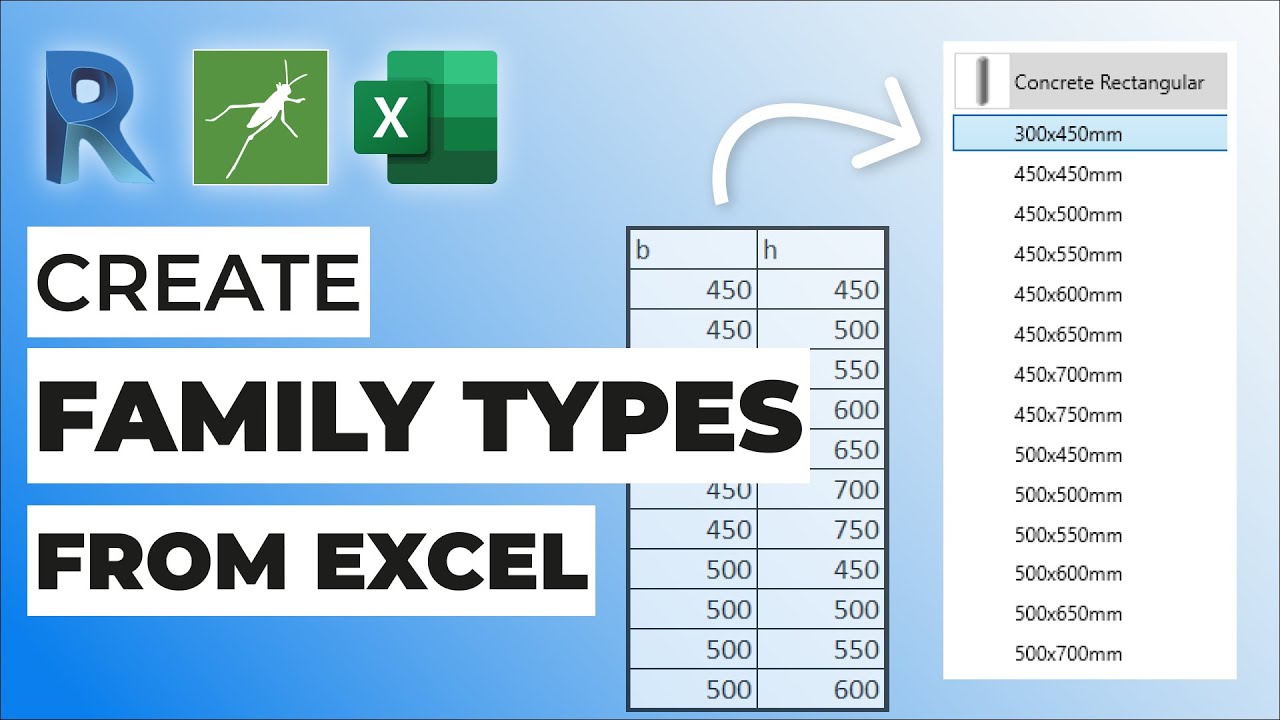Open New Possibilities with Innovative Revit Plugins
Wiki Article
Breaking Obstacles: Excel Importation Techniques for Advanced Revit Users
Are you an advanced Revit user aiming to take your abilities to the following level? In this post, we will certainly show you how to break barriers by leveraging Excel for importation in Revit. Explore numerous data importation methods and master Excel combination to boost your Revit modeling capacities. With our pointers and techniques, you can get rid of importation challenges and end up being a true professional in using Excel for your Revit tasks. Obtain prepared to excel in your Revit trip!Advanced Revit Users: Leveraging Excel for Importation
You can quickly take advantage of Excel for importation as an innovative Revit user. Excel is an effective tool that can substantially boost your process and effectiveness in Revit. With its capacity to handle big amounts of information and execute complex calculations, Excel can be a valuable possession in handling and arranging your project details.One method to utilize Excel for importation is by utilizing the "Link Excel" feature in Revit. This attribute allows you to link an Excel spreadsheet directly into your Revit task, allowing you to update and synchronize information in between both programs. When dealing with schedules or tracking modifications in your job., this can be particularly useful.
Another way to use Excel is by utilizing the "Import/Export" attribute in Revit. This feature enables you to import and export data in between Revit and Excel, providing you the flexibility to function with information in both programs. You can import information from Excel into Revit to produce components such as walls, areas, or doors, and you can additionally export information from Revit to Excel for more analysis or coverage.

Exploring Data Importation Methods in Revit Utilizing Excel
Checking out exactly how to import data from Excel into Revit uses reliable techniques for incorporating details. When you import data from Excel, you can flawlessly move information such as space timetables, material checklists, and equipment information right into your Revit job. This process permits you to save effort and time by avoiding hand-operated data entry.To import information from Excel into Revit, you can use the "Import/Export" feature. This attribute allows you to map the Excel data areas to the equivalent Revit parameters, ensuring that the information is correctly assigned within the version. By choosing the suitable import options, you can manage exactly how the information is imported and exactly how it communicates with your task.
One more approach for importing information from Excel right into Revit is by making use of Eager beaver. With Dynamo, you can produce customized manuscripts that import information from Excel and adjust it within your Revit job.
Understanding Excel Assimilation for Advanced Revit Modeling
Understanding Excel integration for advanced Revit modeling entails utilizing effective approaches to effortlessly move information and automate jobs within your job. By using the power of Excel, you can improve your Revit modeling process and conserve important time. One crucial strategy is importing information from Excel spread sheets directly right into your Revit design. This allows you to inhabit criteria, such as space names or material amounts, with convenience. With a couple of basic steps, you can map the Excel columns to the matching Revit parameters and import the information precisely.An additional useful method is exporting data from Revit to Excel. This enables you to draw out details from your model, such as schedules or material quantities, and evaluate it in Excel utilizing solutions, graphes, or various other powerful tools. By leveraging the capabilities of Excel, you can perform complex computations, produce custom-made records, and gain beneficial understandings right into your task.
In enhancement to information transfer, Excel assimilation can automate recurring jobs in Revit. By developing macros or manuscripts in Excel, you can automate procedures like creating sights, creating sheets, or using standard families - revit tool. This not just saves time yet likewise makes certain uniformity throughout your job
To grasp Excel integration in Revit, it is essential to understand the information structure more helpful hints and how Revit communicates with Excel. By familiarizing on your own with the offered tools and techniques, you can open the full possibility of Excel integration and take your Revit modeling to the next degree.
Conquering Importation Difficulties: Excel Techniques for Revit Experts
When overcoming importation obstacles, it's important to be acquainted with efficient Excel you can try here methods that can profit experts in Revit. As an innovative Revit user, you comprehend the value of perfectly importing information from Excel right into your projects.
One more valuable method is making use of the "Transpose" function in Excel. This enables you to transform information from rows to columns or vice versa. When importing data right into Revit, this can be particularly practical when you have information in a vertical style in Excel, yet you require it to be in a horizontal style in Revit.
Moreover, making use of Excel solutions such as VLOOKUP and INDEX-MATCH can significantly help in mapping information from Excel to Revit. These solutions allow you to look for certain worths in Excel and retrieve matching data from an additional column. This can conserve you time and effort when importing large datasets into Revit.
Excel Information Importation Tips and Techniques for Advanced Revit Users
By acquainting on your own with effective Excel methods and ideas, you can improve your data importation procedure as an innovative user of Revit. In addition, making use of Excel's "Paste Unique" feature allows you to paste information from Excel into Revit while maintaining format, such as cell color or font style. this website Another handy method is to utilize Excel's "Find and Change" feature to rapidly make changes to your data prior to importing it into Revit.
Final Thought
You have actually now found out useful strategies for importing data from Excel right into Revit as an advanced customer. Go ahead, break those obstacles and excel in your Revit jobs!
When importing data into Revit, this can be especially helpful when you have data in an upright layout in Excel, but you need it to be in a straight layout in Revit.
Additionally, using Excel solutions such as VLOOKUP and INDEX-MATCH can significantly help in mapping information from Excel to Revit. In addition, using Excel's "Paste Special" function permits you to paste information from Excel right into Revit while maintaining formatting, such as cell color or font style.
Report this wiki page